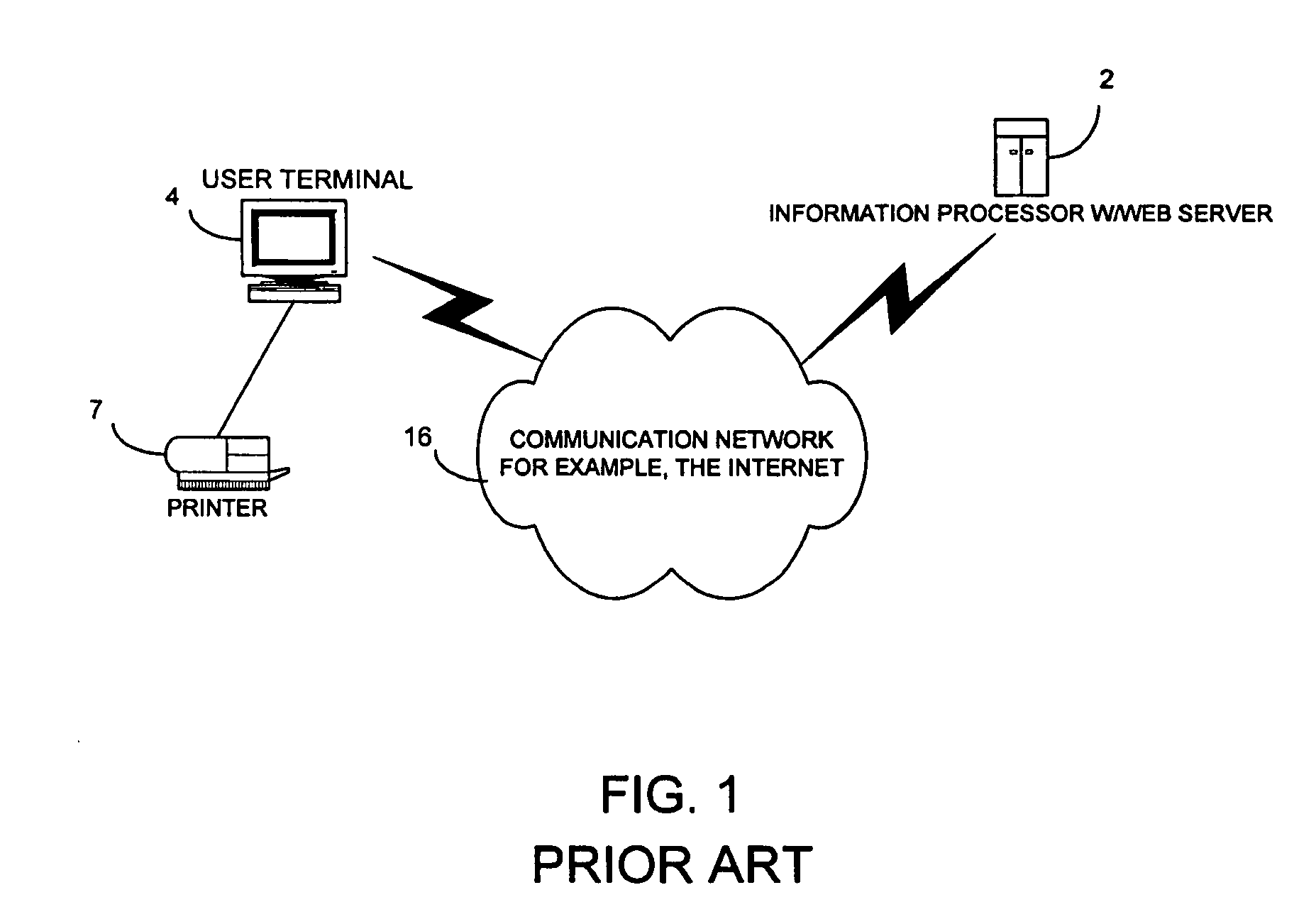System and method for management of the production of printed material
a management system and printing technology, applied in the field of electronic content, can solve the problems of inability to print on standard-sized printer pages, inability to print on a home printer or lower-cost corporate printer, and inability to print on a standard-sized printer pag
- Summary
- Abstract
- Description
- Claims
- Application Information
AI Technical Summary
Problems solved by technology
Method used
Image
Examples
Embodiment Construction
[0030] The present invention ensures that content provided in formatted print pages is current and can provide a convenient user interface to identify portions of a display screen to monitor for changes in content. Providing current content allows the user to stay up-to-date and, when automated or semi-automated, reduces workflow. As used herein, the terms “visitor” and / or “visitor terminal” refer, generally, to a person and / or device operated by a person that establishes a communication session over a network with another device.
[0031] More particularly, an on-line service provider, operating an information processor and referred to herein, generally, as a “production information processor,” preferably provides software for proprietors of web sites who are desirous to provide formatted print pages of content displayed in their web sites, or content related thereto. Similarly, the production information processor can be hosted internally on a corporation's intranet. In addition to ...
PUM
 Login to View More
Login to View More Abstract
Description
Claims
Application Information
 Login to View More
Login to View More - R&D
- Intellectual Property
- Life Sciences
- Materials
- Tech Scout
- Unparalleled Data Quality
- Higher Quality Content
- 60% Fewer Hallucinations
Browse by: Latest US Patents, China's latest patents, Technical Efficacy Thesaurus, Application Domain, Technology Topic, Popular Technical Reports.
© 2025 PatSnap. All rights reserved.Legal|Privacy policy|Modern Slavery Act Transparency Statement|Sitemap|About US| Contact US: help@patsnap.com



